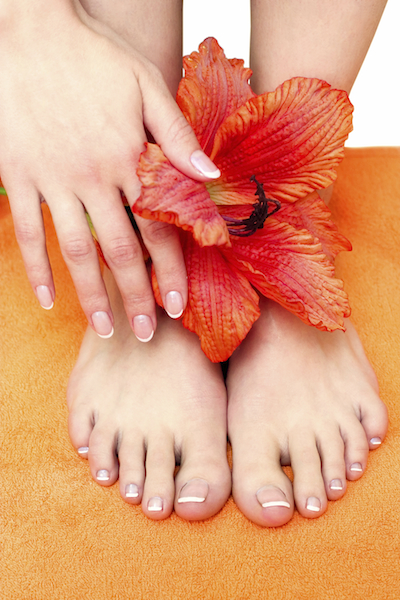
Nail discoloration occurs when fungus, mold, bacteria, or yeast are present. This infection of the nail bed mainly attacks toenails, but can target fingernails too. The first symptoms often noticed are a yellowing or darkening of the nails along with thickening and crumbling.
What caused nail discoloration?
Nail discoloration can be caused by fungus, mold, bacteria, or yeast. Their spores thrive in warm, moist environments and enter the nail bed via direct contact with hands or feet, typically through tiny cuts that occur when the nail has broken or been clipped or bitten below the quick.
Nail discoloration is more common in men than women and is more likely to occur with those who:
- Wear heavy shoes which don’t allow the foot to breathe
- Are diabetic
- Have high blood pressure
- Have compromised immune systems
- Have athlete’s foot
We are also seeing more nail discoloration in women who get pedicures at nails salons where the equipment is not thoroughly sanitized.
How do you treat nail discoloration?
While oral medications can be effective at treating nail fungus, they often have undesirable side effects. Lasers have been found to be quite effective in treating nail discoloration. The nail bed is heated with a laser to the correct temperature needed to kill the spores. It is important to keep the nail area clean and free from polish before, during, and after treatment, since having polish on your nails will make the affected area more conducive to growing unhealthy spores, causing reinfection and discoloration of the nail.
How many treatments are needed?
While some people are rid of nail discoloration in one treatment, it often returns and needs to be treated several times. During a free consultation, our providers can determine the best course of treatment for your nail discoloration.
